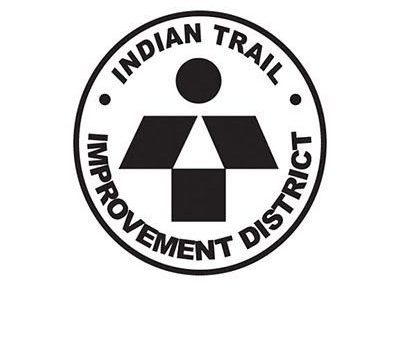The Indian Trail Improvement District Board of Supervisors had a lukewarm response to a mobility improvement plan for The Acreage community submitted by the Treasure Coast Regional Planning Council in a videoconference workshop on Wednesday, Sept. 2.
The TCRPC was contracted last September to help develop ITID’s long-term mobility improvement plan.
During the workshop Wednesday, Dr. Kim DeLaney, director of strategic development and policy for the TCRPC, presented a proposal that brought together many parts of a mobility improvement plan, including county, state and district plans, based largely on discussions with supervisors and the public over the past year.
“The goal of the ITID mobility plan is to create a safe, interconnected transportation network of what are called ‘complete streets,’ and the purpose would be to improve safety, mobility, access and quality of life expressly for ITID residents,” DeLaney said. “I want to emphasize that because the challenges of the roadway network that you have in the district are different than the challenges that other communities have. You have a roadway network that’s used by many but funded by few, and we’re very aware of that.”
As a result, DeLaney said the plan focused on providing the design expectations of the community, identify partners to work with, and commit to priorities and implementation in a manner that will make ITID as competitive as possible to be able to leverage local dollars to gain more funding from other entities.
“That’s an expressed focus that we have in the planning process,” DeLaney said.
The mobility plan stresses aesthetic and multimodal methods of transportation, including walking, biking, horseback riding and vehicular transportation that interacts well with other types of transportation. Proposals included wider multimodal and equestrian paths separated by fences from vehicular traffic, with landscaping and buffers to separate the roadways from homes along the rights of way.
“There’s been a lot of discussion about plant materials and vegetation, particularly bioswales, so the mobility plan includes detail with respect to the types of plant materials that will do well in a bioswale condition,” DeLaney said. “Those are plants that are more water tolerant than others.”
The plans consider the different types of roadways, including dirt roads that make up most of ITID’s transportation network, paved district roads and county roads that are designated for high levels of traffic that she said might nevertheless be included in the plan if the county is persuaded to cooperate.
It includes local projects such as ITID’s R-3 Road Plan, intended to improve transportation around schools, fire stations and other public facilities, as well as the district’s traffic calming plan that is currently underway.
“All of the [Florida Department of Transportation] projects will be under construction next year, as well as the Palm Beach County funded projects that will be built within the next five years,” DeLaney said, adding that the plan would be ready for the board’s consideration at its meeting on Sept. 16.
ITID President Betty Argue was not happy with the plan, saying she wished it was more long-term.
“There’s a lot missing in this,” Argue said. “There’s some gaps that I see. There’s some things that I think really need to be addressed before we bring it to the board for adoption.”
DeLaney said there were other aspects of the plan that were identified but left out due to budget considerations to get the plan within a $20 million range.
After more discussion, the board decided to postpone a presentation for adoption until its October meeting.
DeLaney also announced the award of $35,000 to ITID by the Department of Economic Opportunity on Aug. 7. ITID was one of eight rural communities receiving the grants through the DEO.
“There were so many good community support letters and outreach, and we were successful,” DeLaney said.








